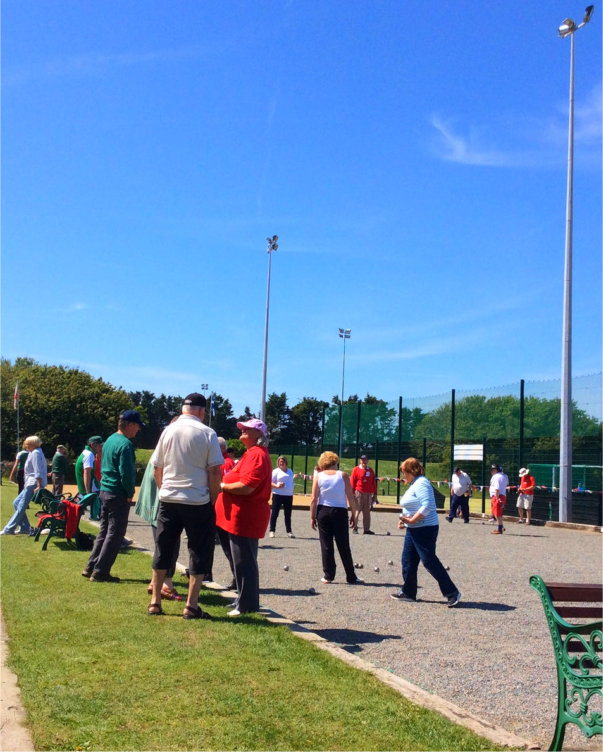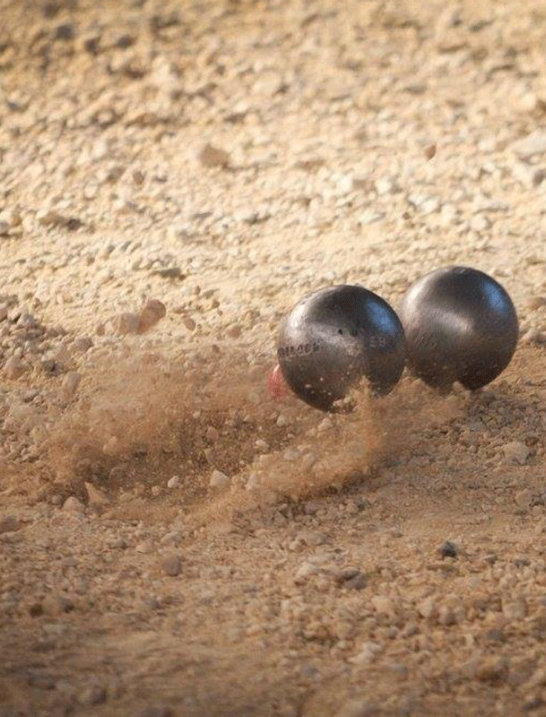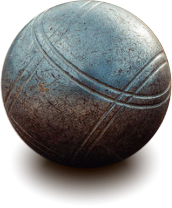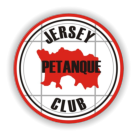About Jersey Petanque Club
The history of the Jersey Petanque Club has its origins in friendly games of boules on St. Ouen’s beach, progressing to more challenging encounters on campsites in France and culminated in regular gatherings of enthusiasts at the Old Portelet Inn before the club was eventually established in April 1986.
Four local residents had first proposed the idea for a club in Jersey and through the columns of the local Jersey Evening Post, they encouraged others to join them. A feature item in September 1985 attracted more than 30 like-minded novices to the game and great progress was made in this first season.
The number of regular players swelled to around 60 after a playing invitation appeared in the Jersey Evening Post in April 1986; this effectively established the Jersey Petanque Club as a viable new sporting facility in the island. Indeed, as early as June of that year the club hosted its first international petanque competition as part of the new Festival France-Jersey.


The first annual general meeting of the Jersey Petanque Club was held in October 1986 when the late Gerald Durrell kindly accepted an invitation to become the first Honorary President of the club; Tony Allchurch was elected as the first Chairman with Derek Hart as Club Captain. The petanque weekends with Coutances had proved to be a great success and they would become an annual fixture. It was at this early stage that a Jersey Open Competition was given consideration.
In 1995, the club’s terrains and clubhouse were officially opened, which gave the JPC a purpose built facility which is the envy of many UK and overseas club. In 2003 the clubhouse was extended and is used regularly for club events, competitions and social events.
For many years, the Club negotiated a very successful sponsorship deal with Professional Business Systems CI Ltd who continued their support of the club for number of years. This support was invaluable, allowing the club to undertake regular competitions and build up a supply of boules and other equipment. New sponsors are always welcome!
There are now four other clubs on the Island registered with the Jersey Petanque Association; a club in Guernsey and of course numerous clubs throughout the world.
About The Game
The origins of Petanque (or Boules) are lost in history. It was probably played in ancient Egypt and there may even be earlier references.
It has certainly been and still remains, an essential part of the social life of every French town and village. The sport is now played throughout the world with national, regional and world championships held regularly.
Petanque can be and is, played on almost any surface and the only equipment needed is a set of boules.
A good player needs the ability to place their boules accurately and also be able to dispatch an opponent’s boule while at the same time placing their boules in an unassailable position. To do this a player needs to be able to “read” the terrain and be a tactician. Of course, having a good partner helps!
Last, but not least, winning often also depends on a little luck!

How to Play Petanque
Petanque is played according to the rules of the FIPJP but this abridged set of rules will give a newcomer to the game an idea of what to do and how to do it.
- The game is played as singles (two players playing each other), doubles (two teams of two) or triples (two teams of three players). In the case of singles and doubles each player has three boules while in a game of triples each player has two boules.
- If numbers dictate, a doubles team can play a triples team with each team having six boules.
- The first team to play is chosen by tossing a coin. Any player in the team chooses the starting position and draws on the playing area (terrain) a circle between 36 and 50 cms in diameter.
- The same player, standing in the circle, now throws the wooden jack (a cochonette) between six and ten metres length and half a metre from any obstacle (such as the side of the terrain or a tree etc.).
- Any player from this team throws (from the circle) the first boule trying to place it as near as possible to the cochonette. The player must keep both feet on the ground and inside the circle while throwing. This applies to all players at all times.
- Then it is up to a player from the team not leading (i.e. the team with a boule furthest from the cochonette) to throw until their team get a boule nearer than their opponents. (Any player of the team can play in any order). If they do get a boule closer, then a player from the opposing team takes their turn to get nearer.
- When a team has no more boules then the player from the other team throw their remaining boules and try to get as close as possible to the cochonette.
- When the teams have no more boules, the “end” is over and the points are counted. The winning team gets as many points as it has boules that are nearer the cochonette than the nearest boule of their opponents. When in doubt, a measure is used to check the distances.
- A new end is started by a player of the team that won the previous end, throwing the cochonette from a new circle that can be either where the previous game finished or at the opposite end to the first circle. This will depend on the layout of the terrain.
- Play then continues as described above. The game is complete when one team has scored a total of 13 points.
About The Council
The Club is managed by a Council that consists of the President, Vice President, Secretary, Treasurer, Captain (who chairs a playing committee) and three council members with responsibility for Property, Social and Publicity. All of the Council are elected each November but all members of the club are expected to help in various ways from time to time.
Current members of the Council
President: Dennis Le Mercier
Vice-President: Peter Blampied
Captain: Mick Cotillard
Secretary: Michael Yates
Treasurer: Linda Taylor
Social: Thomas Glennie
Publicity: Position not filled
Property: Brian Elliott
Links to Useful Websites
National and Local Petanque
